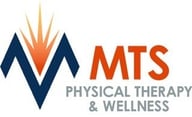Here at MTS Therapy & Wellness, our goal is to develop the entire individual: physically, mentally, and spiritually. Remaining healthy and avoiding injury is an essential component to achieving one's full potential.
Watch below as physical therapists, Byrnes Tatford and John Broussard, have athletes demonstrate some essential dynamic warm up exercises.
Why is a warm up routine important?
Soft tissue injuries commonly occur to muscles, tendons, and ligaments during sports participation and exercise activities. As many youth and high school athletes return to the field or court for a start of another season, an active functional warm up routine prior to any physical activity is critical to prepare the muscles for the demand of the activity.
A proper warm up routine increases your heart and blood flow rates while loosening up muscles, tendons, ligaments, and joints. Whether participating as a team or an individual, we will share 9 essential dynamic warm up exercises to perform prior to practice and competition to assure proper preparation to reduce risk of soft tissue injury.
9 Essential dynamic exercises:
1. Walking Lunge (Forward)
Walking lunges are a variation on the static lunge exercise. Instead of standing back upright after performing a lunge on one leg, as would in a static bodyweight lunge, you "walk" forward by lunging out with the other leg. Walking lunges require more balance and coordination than static lunges.
This exercise is used to increase functional range of motion (ROM) and muscle length of the quadriceps, glutes, hamstrings, calves, abdominals, and hips.
Technique:
-
-
- Stand up straight with your feet shoulder-width apart. Your hands can stay by the side of your body or on your hips. If desired, you can also add an overhead reach component to this exercise to promote trunk extension.
- Step forward with your right leg, putting the weight into your heel.
- Bend the right knee, lowering down so that it's parallel to the floor in a lunge position.
- Without moving the right leg, move your left foot forward, repeating the same movement on the left leg. Pause as your left leg is parallel to the floor in a lunge position.
- Repeat this movement, "walking" forward as your lunge, alternating legs.
-
Perform for 5 reps on each leg or 10-yard distance.
2. Walking Lunge (Reverse)
Reverse or backward lunges target the glutes and hamstring and naturally allows a more forward trunk lean. You should be pushing much more with your front leg than your back leg in a posterior lunge.
This exercise targets primarily glutes, quadriceps, hamstrings and calves.
Technique:
-
-
- Stand up straight with your feet shoulder-width apart. Your hands can stay by the side of your body or on your hips.
- Step backward with one of you legs.
- Bend your back leg so your back knee will nearly touch the ground, and your front knee so your thigh is about parallel to the ground.
- Make sure your shin is vertical to your ankle in your front knee.
- Keep your weight on the heel of your front foot, and make sure that your front foot stays planted throughout the exercise - your heel should not lift up.
- Without moving the back leg, move your other foot backward, repeating the same movement on the other leg.
- Repeat the movement, "walking" backward as you lunge, alternate legs.
-
Perform for 5 reps on each leg or 10-yard distance.
3. Lunge with Twist
A lunge with a torso twist gives you the added benefit of working your abdominals in addition to your glutes and quads.
This exercise targets quadriceps, glutes and obliques.
Technique:
-
-
- Stand up straight with your feet hip-width apart. Engage your abs.
- Step forward with your right leg putting your weight into your heel.
- As your right foot strikes the floor and stabilizes, bend the right knee, lowering down so that your knee is parallel to the floor in a lunge position. Pause.
- When stable in your lunge position, twist your upper body to the right. The movement should come from your torso.
- Twist back to center and start to lunge forward with your left leg. Repeat the same movement on the left leg, “walking” forward as you lunge and twisting to the left.
-
Perform for 5 reps on each leg or 10-yard distance.
4. Lunge with hip opener (elbow to foot)
This lunge variation provides a connection between your hips and low back. This exercises stretches and strengthens the front of the hip and thigh, abdominals, ankles and calves.
Technique:
-
-
- Stand up straight with your feet shoulder-width apart. Your hands can stay by the side of your body or on your hips.
- Step forward with your right leg, putting the weight into your heel.
- Bend the right knee, lowering down so that it’s parallel to the floor in a lunge position. Pause for a beat.
- Bring the right hand to the inside of the right foot and use opposite arm to reach to the sky promoting trunk rotation.
- Move your left foot forward, repeating the same movement on the left leg. Pause as your left leg is parallel to the floor in a lunge position and bring your left hand to the inside of your left foot while reaching to the sky with the right (opposite) side.
- Repeat this movement, “walking” forward as you lunge, alternating legs with a twisting motion of your torso.
-
Perform for 5 reps on each leg or 10-yard distance.
5. A-Skip
A-Skip is a basic drill that helps develop lower-leg strength while encouraging knee lift and promoting an efficient foot strike. We recommend the A-skip exercise as part of your warm-up routine before activity to get key muscles firing for faster running.
Technique:
-
-
- Skip forward, driving your lead knee forcefully to waist height (90 degrees) while keeping your back leg straight as you come off your toe.
- Keep your toes drawn up towards your shin with a slight forward trunk lean.
- Swing your arms so that your right arm is forward when your left knee is up.
- Continue moving forward in this manner—alternating legs—and striking the ground with your mid-foot or forefoot while swinging your opposite arm in unison with your lead leg.
- When doing this drill for the first time, walk through it to get the motion down and gradually progress to skipping.
-
Perform for a 10-20 yard distance.
6. B-Skip
The B-skip is the trickiest to learn. This drill is just like the “A” skip mentioned previously, except after you drive the knee up, then you extend the knee. Knee extension happens passively as you snap the leg back down with your glutes and hamstrings, pawing your foot to the ground. This powerful hip snap is referred to as the “paw-back,” and it teaches the runner to contact the ground not on the heel but on the forefoot slightly in front of the body. Repeating this exercise consistently makes you faster through technique and teaches the hamstring to react properly and prevent injuries.
Technique:
-
-
- Skip forward, driving your lead knee forcefully to waist height (90 degrees) while keeping your back leg straight as you come off your toe.
- Keep your toes drawn up towards your shin with a slight forward trunk lean.
- Extend your knee so that your leg is pointing almost straight forward.
- Snap your leg back down toward the ground. Accelerate leg down with an eccentric (lengthening) contraction of hamstring.
- Repeat with opposite leg in skipping fashion
- Swing your arms so that your right arm is forward when your left knee is up.
- When doing this drill for the first time, walk through it to get the motion down and gradually progress to skipping.
-
Perform for a 10-20 yard distance.
7. Butt Kicks (C-Skips)
Butt kicks are considered a key warm up drill for athletes who want to gain better running form and protect themselves from injury. Butt kicks, also known as C-skips, look a bit like the opposite of the A-skip. Instead of driving your knee upward, keep your knee pointing down and snap your heel back and up toward your butt.
This exercise may help increase the speed of hamstring contractions, which can help you run faster. This explosive move works both your hamstring muscles and your glutes, and it can also be used as a dynamic stretch for your quads. You can also work the muscles in your core, arms, and back by pumping your arms.
Technique:
-
-
- Stand up straight with your feet shoulder-width apart. Your hands can stay by the side of your body or on your hips.
- Keep your knee pointing down and snap your heel back and up toward your butt.
- Place the ball of your right foot back on the ground, bring your left heel to your buttocks. Make sure you land gently on the ball of your foot, with your foot landing directly beneath your hips.
- To work your upper body at the same time, pump your arms while performing this motion. If your left heel is kicking your buttocks, pump your right arm forward at a 90-degree angle. If your right heel is kicking, pump your left arm forward.
- Continue moving forward in this manner—alternating legs—and striking the ground with your mid-foot or forefoot while swinging your opposite arm in unison with your lead leg.
- When doing this drill for the first time, walk through it to get the motion down and gradually progress the speed
-
Perform for a 10-20 yard distance.
8. Tall Lateral Shuffle
The lateral shuffle is a popular warm up exercise used among athletes of all fitness levels. This drill helps develop coordination, balance, and quickness. The side shuffle is an agility exercise that targets the glutes, hips, thighs, and calves.
Technique:
-
-
- Stand up straight with your feet shoulder-width apart.
- Hips and knees should be straight, looking forward, chest lifted, and neutral spine.
- Move right using shuffle steps while keeping your legs straight. Repeat movement to the left side.
- Swing your hands overhead while you are shuffling laterally.
-
Perform by continuing to shuffle right and left for a 10-20 yard distance.
9. Low Lateral Shuffle
The low lateral shuffle is a modification to the tall lateral shuffle. The main modification of this exercise is to bend forward at the hips and bend the knees while performing the lateral shuffle movement.
The goals of this drill remain the same as the tall lateral shuffle, but it allows the individual to be in a more athletic and functional position.
Technique:
-
-
- Stand up straight with your feet shoulder-width apart.
- Hinge/bend forward at the hips, knees bent, looking forward, chest lifted, and neutral spine.
- Hold your hands in loose fists in front of your chest.
- Move right using small quick shuffle steps. Repeat movement to the left side.
-
Perform by continuing to shuffle right and left for a 10-20 yard distance.
These easy to perform drills do not require any equipment and will allow you to achieve your best self during practice and competition.
If your team is looking for someone to assist with development of a pre-exercise routine, please contact MTS Therapy and Wellness.
About MTS Physical Therapy & Wellness
 MTS offers full physical therapy services, along with all inclusive wellness and gym memberships serving the Acadiana Area. Our approach is a concept that embraces all aspects of a person’s needs. We help you better understand the importance of body, mind and soul to your overall well-being.
MTS offers full physical therapy services, along with all inclusive wellness and gym memberships serving the Acadiana Area. Our approach is a concept that embraces all aspects of a person’s needs. We help you better understand the importance of body, mind and soul to your overall well-being.
With complete physical therapy services, relaxed settings, and supportive and encouraging staff at all locations, we will make it possible for you to get back to living LIFE again!







